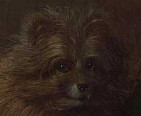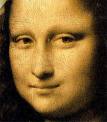One of my PhD students, Fariza, has been extensively studying a single person, a women not so disimilar from herself. In doing so they have become friends and much of Fariza’s thesis (soon to be submitted) concerns the methodological issues surrounding this.
 One issue we have discussed at length is the importance of estrangement, that distancing oneself from the commonplace to make the taken for granted become apparent. We do not see the things closest to us: the dirty toenail, the crumpled sheet, the asymmetric fall of the piano music stand, the things lost because they are in the open.
One issue we have discussed at length is the importance of estrangement, that distancing oneself from the commonplace to make the taken for granted become apparent. We do not see the things closest to us: the dirty toenail, the crumpled sheet, the asymmetric fall of the piano music stand, the things lost because they are in the open.
Artists and comedians often open our eyes to the unseen-because-unnoticed aspects of life, such as Emin’s own crumpled sheets or the poignant woman on the platform in “The Fall and Rise of Reggie Perrin”1. Garfinkel’s breaching experiments attempt to bring this incisive comic eye to social science. Of novelists Gabriel García Márquez is the master of this; through his true to life yet surreal accounts, with sometimes tenderness and sometimes almost cruel dispassion, he describes in intricate detail the intimate yet insignificant.
 Berger talks about the way artists look at their work in a mirror to see it afresh and he himself sees the sunshine of lilacs in the mirror, lilacs that show him only their shadows2. I was reminded of one of C.S. Lewis’ Narnia books where the supra-reality of the mirror image is more crystal sharp, more ‘real’ than the ordinary world3.
Berger talks about the way artists look at their work in a mirror to see it afresh and he himself sees the sunshine of lilacs in the mirror, lilacs that show him only their shadows2. I was reminded of one of C.S. Lewis’ Narnia books where the supra-reality of the mirror image is more crystal sharp, more ‘real’ than the ordinary world3.
Mirrors bring to mind reflective practice, just as Fariza has to write herself into her own accounts, the mirror often shows not only the unseen side of an object but also oneself and oneself in relation to the object. The seer and seen are themselves seen and, like Berger’s lilacs, the partiality of one’s seeing becomes more obvious. The mirror is not so much important because it shows the hidden sun-glowed lilacs, but because it says that the shadowed petals are not the whole flower.
 I am reminded of that Dutch painting by van Eyck where the apparently pregnant woman and her husband stand in their home with their lap dog between them and discarded outdoor shoes untidily dropped4. On the wall behind the couple is a convex mirror capturing the whole scene from behind, and in the reflected doorway where you stand is the tiny image of van Eyck and another. Unlike supposedly ‘good’ scientific writing in incomprehensible passive speech, the artist has not painted himself out of his picture.
I am reminded of that Dutch painting by van Eyck where the apparently pregnant woman and her husband stand in their home with their lap dog between them and discarded outdoor shoes untidily dropped4. On the wall behind the couple is a convex mirror capturing the whole scene from behind, and in the reflected doorway where you stand is the tiny image of van Eyck and another. Unlike supposedly ‘good’ scientific writing in incomprehensible passive speech, the artist has not painted himself out of his picture.
 Berger also talks about paintings being painted for the moment of seeing, yet so many portraits do not look towards you, or even the artist, but through you, beyond you, to an unseen landscape. This may be because it is hard to paint eyes, or because it is hard to stare into the eyes of one’s painter. In life it is only with the deepest lovers or friends that we dare to share like this, hence perhaps the growing friendship that Fariza experienced when gazing deeply together into her subject’s life. Also, perhaps why the most intimate paintings have often been of the painter’s wives or lovers. Unusually in van Eyck’s painting, clearly of close friends, the couple do not gaze either aloof or uncaring past the viewer, but instead gaze within the painting demurely to one another … it is only the small dog that stares back.
Berger also talks about paintings being painted for the moment of seeing, yet so many portraits do not look towards you, or even the artist, but through you, beyond you, to an unseen landscape. This may be because it is hard to paint eyes, or because it is hard to stare into the eyes of one’s painter. In life it is only with the deepest lovers or friends that we dare to share like this, hence perhaps the growing friendship that Fariza experienced when gazing deeply together into her subject’s life. Also, perhaps why the most intimate paintings have often been of the painter’s wives or lovers. Unusually in van Eyck’s painting, clearly of close friends, the couple do not gaze either aloof or uncaring past the viewer, but instead gaze within the painting demurely to one another … it is only the small dog that stares back.
 This may be part of the Mona Lisa’s allure. I have never seen it ‘in the flesh’, but everyone talks about the eyes that they follow you. However, look again, it is not so much that they follow you, but, unusual amongst paintings, they actually look at you and I suppose at Leonardo himself.
This may be part of the Mona Lisa’s allure. I have never seen it ‘in the flesh’, but everyone talks about the eyes that they follow you. However, look again, it is not so much that they follow you, but, unusual amongst paintings, they actually look at you and I suppose at Leonardo himself.
I know Fariza has found this, and I am sure it is universal, that if we look closely and honestly at those around us, we begin more clearly to see ourselves .
- This was a popular BBC TV series, but it is the book which I remember as most moving, I laughed out loud and shed tears equally.[back]
- John Berger, “and our faces, my heart, brief as photos“, Bloomsbury, 2005[back]
- end of Chapter 15 in “The Last Battle“[back]
- The page about the Arnolfini Portrait at the National Gallery site allows you to zoom into the image. It also explains that the woman is not actually pregnant, but simply in the full skirt style of the day.[back]